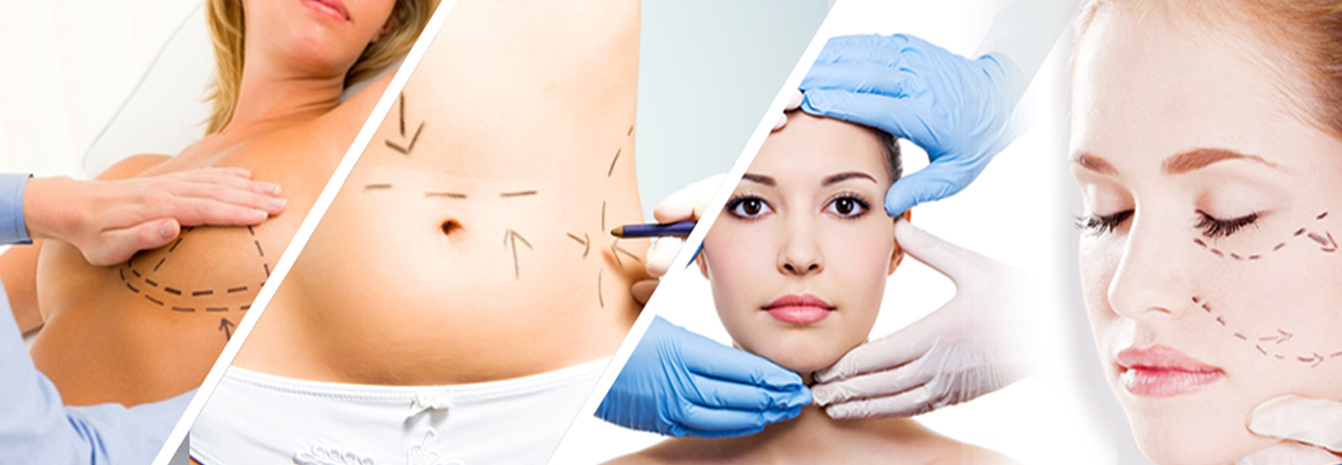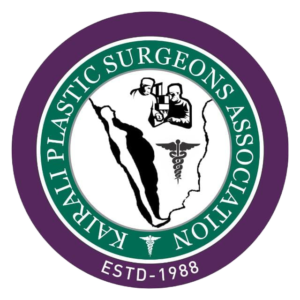
- Abdominal Wall Reconstruction
- Acute Trauma Management
- Breast Reconstruction
- Brachial Plexus and Peripheral Nerve Surgeries
- Burns And Reconstructive Surgeries
- Chest Wall Reconstruction
- Cleft And Craniofacial Surgeries
- Congenital Deformities
- Diabetic Foot & Its Management
- Gender Confirmation Surgeries
- Hand Surgeries
- Head & Neck Reconstruction
- Micro Vascular surgery
- Negative Pressure Wound Therapy
- Pressure Sore And Reconstructive Procedures
- Regenerative Medicine
- Tissue Expansion
INTRODUCTION:
Brachial plexus is a complex network of nerves formed by C5, C6, C7, C8, and T1 spinal nerve roots. This network provides motor and sensory supply for the upper limb. The plexus may be affected by several conditions like trauma tumor and medical conditions like Parsonage Turner Syndrome. Brachial plexus palsy may be broadly classified into pediatric brachial plexus birth palsy and adult brachial plexus palsy.
Brachial Plexus Birth Palsy is usually due to shoulder dystocia due to various causes. Birth palsies may be total or partial. Partial C5, C6 and C5, C6, C7 lesions are known as Erb’s palsy.
Adult brachial plexus injuries are usually due to road traffic accidents. They may be upper plexus palsy or pan plexus palsy.
PROCEDURE:
BRACHIAL PLEXUS BIRTH PALSY:
Surgical intervention is usually required if the child does not develop antigravity biceps function at 3-6months. Surgical techniques include Primary nerve grafting and nerve transfers which may include use of opposite C7 root in some cases of total palsies. Late cases may need secondary surgeries for correction of deformities.
ADULT BRACHIAL PLEXUS INJURY:
Upper plexus lesions are usually dealt with nerve transfers, which usually give excellent results. Pan palsies, especially those with pan avulsion usually have a poor prognosis. Multiple nerve transfers, functional muscle transfers, use of opposite C7 and recently, the WANG procedure are used as treatment options.
PRIMARY NERVE GRAFTING-
Severe crush injuries and nerve surgeries for tumor ablation requires nerve repair leading to approximation with either tension or gap. Such situations entail primary nerve grafting as an option for nerve repair.
SOURCES-
- Sural nerve- harvested from the lateral aspect of the leg is one of the most common sources of nerve graft with approximately 30-40cms length may be harvested.
- Lateral antebrachial cutaneous nerve
- Medial antebrachial cutaneous nerve are some other sources.
Pre-Requisites for Nerve Grafting- Skeletal Stability
- Adequate soft tissue cover
- A healthy wound bed
- Timing of repair- too late a repair may sometimes not yield beneficial results especially if long segment recovery would extend beyond 1year.
PROCEDURE-
The transected nerve is prepared and crushed ends prepared till healthy. The length of graft assessed with respect to length of inter-bridging segment needed and number of cables required with respect to the thickness of the nerve to be repaired. Adequate segment of nerve harvested allowing repair without tension. The repair is done under microscope magnification(preferred ) or under loupe magnification.
Disadvantages-
- Donor site Scarring
- Donor site sensory loss (Patient needs to be educated to sensitize and prevent future injuries)
- Two Co-aptation sites need to crossed by the growing axonal outgrowths and thus two sitesof latency. Hence, nerve transfer may be considered a better option in long segment defects.
NERVE TRANSFERS-
Nerve transfers are indicated in situations where
- Nerve roots have been avulsed from the spinal cord (pre-ganglionic injury) or when the proximal nerve is otherwise unavailable for repair using nerve grafts.
- Long nerve graft is required (as results are poor)
- Long distance between injury site and motor end plates (long recovery time)
- Late presentation.
There is increasing preference for using nerve transfers for re-innervation even when primary nerve graft may be possible. An important advantage of nerve transfer over primary nerve grafting is that in nerve grafting, the regenerating fibres must cross two anastomosis sites and the second or distal site is reached much later with more fibrosis and scarring at surgical site and hence, longer recovery or failure in cases of long grafts.
Nerve transfers may be-
INTRAPLEXAL REPAIR:
Repair of injured nerve utilizing nerve grafts within the brachial plexus. Nerve branches supplying accessory or inconsequential function, without compromising hand function, may be harvested from the ipsilateral brachial plexus. It is applicable in non-global root avulsions wherein atleast one spinal nerve with small rupture injury is available for transfer (not to its original but to other more important nerve roots within the plexus). Most common for upper brachial plexus palsy is the Oberlin repair i. e. transferring a part of the ulnar nerve to the branch to the biceps (Oberlin 1) and transferring a part of the median nerve to the branch to the brachialis (Oberlin 2).
EXTRAPLEXAL REPAIR-
Includes utilizing nerve grafts outside the brachial plexus, i.e. from adjacent areas as neck. Functionally less important nerves are harvested. Eg- intercostal nerves may be harvested and transferred to axillary nerves. Accessory nerves may be used for repair of suprascapular nerves. Usually aimed at motor re-innervation though sometimes used for extraplexual sensory transfer for providing sensation to a paralytic hand to prevent ulceration and injuries.
DISTAL NERVE TRANSFERS:
distal nerve transfer is a procedure that involves direct coaptation of nerve end to a site much more close to the neurovascular junction (distal) away from the brachial plexus to facilitate faster recovery of motor neurons and muscle function.
RISKS-
- Donor site morbidity
- Skin grafting
- Muscle co-contraction
- Long duration of recovery
- Patient training and education
PERIPHERAL NERVES
INTRODUCTION:
Peripheral nerve system is a network of 43 pairs of nerves that supply motor and sensory fibres throughout the human body. These may be affected by trauma, tumor etc. apart from various medical conditions like diabetes. Another common eitiology is compression of nerves at specific sites.
Timing is essential in treating these, since in significant injuries only early intervention can result in better prognosis. Compression syndromes are dealt with releasing the compressive element
Neuropraxia- which is the least severe form of injury usually recovers in 3 weeks time. If nerves are transected or injured, either from trauma or tumor removal, nerve surgery is recommended. Nerve surgery includes- neurolysis, primary repair, nerve grafting, and nerve transfers and in some cases free function muscle transfers. Late presenting cases are dealt with secondary surgical procedures like tendon transfers or joint arthrodesis.
RECOVERY:
- Neuropraxia- usually resolves by itself within 3 weeks
- Reinnervation – occurs in two ways- a) collateral branching b) regeneration of injured axons
- Collateral Branching– usually nerve injuries with 20-30% axonal damage heal with collateral branching. The process starts in 4-6 days and may continue upto 3-6 months. There are more axonal sprouts and thus there is initial muscle hypertrophy which is later balanced by the atrophied muscle fibres that are denervated.
- Regeneration of Axons– nerves with more than 90% axonal transection, nerve regeneration is the primary process of healing. 3 stages-
- Wallerian degeneration- happens in the 1 st week of insult. The distal stump undergoes granular disintegration of its cytoskeleton while the proximal stump undergoes disintegration upto the first node of Ranvier. These produce a micro-environment conducive for axonal regrowth.
- Axonal Regeneration- Axonal injury with an intact endoneurial tube and injuries more distal to the neuron have a better recover than proximal injuries. These axonal outgrowths become remyelinated with Schwann cells that is thinner than the original. Axonal outgrowth occurs at about 1mm/day.
- End- Organ Reinnervation- once the nerve reaches the target organ to be innervated, recovery is still possible only if the end organ is maintained. A stable end oragn includes a stable neuromuscular junction in case of motor neurons and sensory organs like Paccinian corpuscles, Meissner corpuscles. While muscle fibres atrophy as early as 3 weeks, NMJ integrity may be maintained upto 1 year. After 2 years irreversible muscle fibrosis occurs and nerve repair requiring recovery period exceeding 2 years (from insult) is not attempted. Sensory organs are preserved for about 2-3 years, so sensory recovery may continue even if muscle function is lost.
